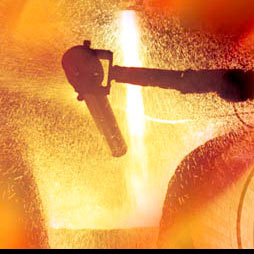5 Common Misconceptions About Refractories
For many industrial plant engineers and managers, selecting and installing refractories in a new construction project (or during maintenance of important heat processing equipment) are almost an afterthought.
These engineers and managers are often overworked, and many don’t have any formal training on refractories. This often causes them to place refractory selection at the end of the Gantt chart or “To Do” list, and treat it as an expense… to be minimized in any way possible.
This thinking can cost industrial facilities tens of thousands to millions of dollars in lost productivity and maintenance over a 4- to 7-year period.
The Value of Refractories
Refractory products have often been referred to as the “backbone of industry” because they’re used during the heat and chemical processing of all commodities. Our cars, buildings, transportation infrastructure, utilities, and thousands of other products couldn’t be created without the use of refractories.
Refractories provide:
Protection of Capital Investments
Industrial heat processing equipment such as boilers, kilns, furnaces, incinerators, gasifiers and dryers can be multi-million dollar investments. Refractories protect them from thermal damage and can extend their lifespan, and thus the return on capital invested in them.
Protection for Workers
Refractories also play a significant role in protecting industrial workers from serious or fatal injuries. Industrial heat processes can routinely create temperatures in excess of 2,500 degrees Fahrenheit, and are used to protect workers from extremely dangerous heat conditions.
Protection Against Lost Production
When heat processing equipment requires maintenance or worse yet, fails, factory downtime can create significant sales losses. For some plants, one day of downtime can cost the company over a million dollars in revenue. The proper choice of refractories can serve as an insurance policy against downtime.
Surprising Misconceptions About Refractories
Even though refractories are extremely important components of any industrial heat processing operation, the industry is filled with misconceptions about refractories. It’s not uncommon for industrial construction contractors who don’t specialize in refractory contracting to use the incorrect materials and the wrong application process, without the plant engineer ever knowing.
If you’re preparing for a new construction project, or are looking to optimize your existing heat processing equipment, here are 5 misconceptions you should be sure to avoid
1. Refractories are standardized products.
Refractories are not at all standardized. There are very general classifications of refractory product types, including:
-
- Fireclay and high alumina refractory bricks
- Fireclay and high alumina plastic refractories and ramming mixes
- Zircon refractories
- Silica refractory brick
- Castable refractories, alumina and alumino-silicate
- Chrome, chrome-magnesite, magnesite-chrome and magnesite brick
- Insulating firebrick
Within these general, high-level classifications, there are a multitude of different combinations, including variations based on chemical content, weight, PCE value and modulus of rupture value.
2. Refractories do not require regular maintenance.
Refractories are consumable, and must be replaced. They WILL wear out. They’re like the brakes or tires in your car – protecting you, until they fail. Understanding the maintenance and repair schedules of your refractories at installation will help extend their life and work to prevent accidents, downtime and equipment failure.
3. Water is water.
An inexperienced contractor might use dirty water when mixing a castable. Could this cause a problem? Absolutely. Water containing suspended solids can modify the composition of the castable, leading to possible premature collapse or failure. The general rule of thumb is to use drinkable water when mixing a castable.
4. Refractories made by different manufacturers are identical.
Refractory products of the same type often vary from manufacturer to manufacturer. What might appear to be similar products could have different chemical compositions. So only use an experienced refractories engineer to select the refractory products for your installations.
5. Weather doesn’t affect castable refractories.
Cold temperatures affect the ability of castables to bond, and have a direct effect on the performance and the integrity of the installed lining. Precautions must be taken during the mixing, installation and storage of castables by your contractor.
Keep these points in mind the next time you’re considering new construction, or refractory repair or maintenance. Refractories are not a commodity, and refractory selection is not a “one size fits all” process.
Careful consideration and care will yield the best long-term results, for your people and your company’s bottom line.
Comments are closed.


